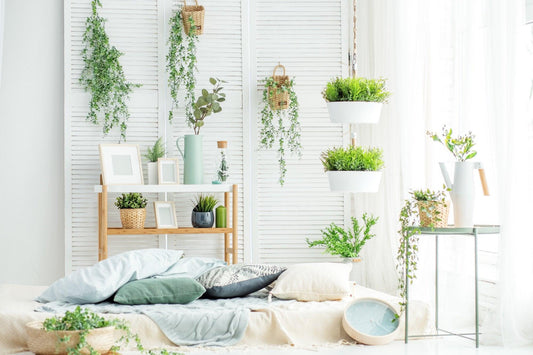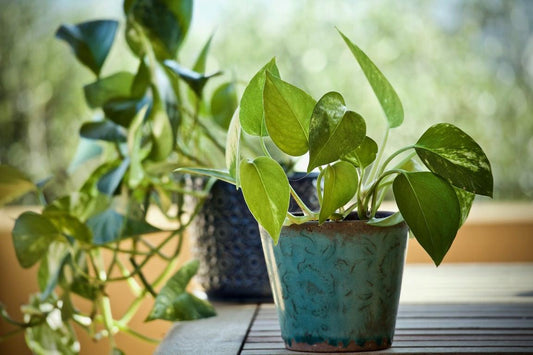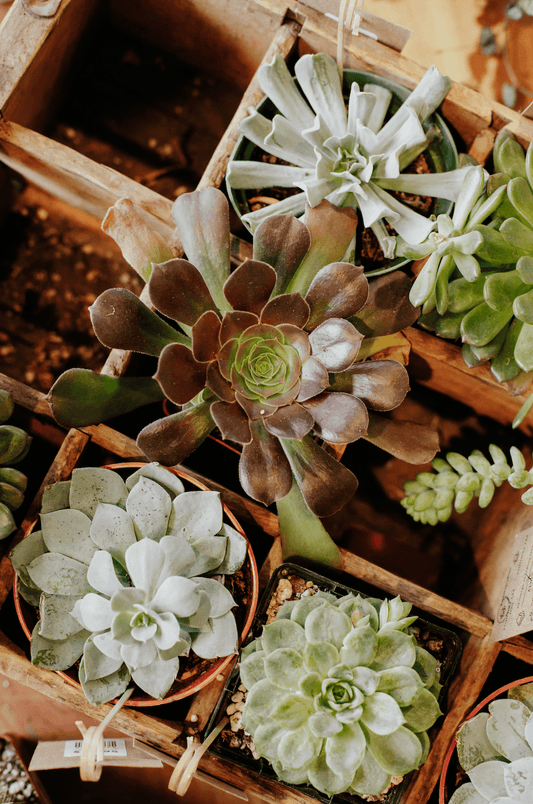DRACAENA
How to Care for the DRACAENA Plant
Overview
Easy to care for, and tolerant to a variety of growing conditions, the Dracaena is one of the most popular house plant choices among novice plant owners. A genus comprising several species, Dracaena plants vary in size, shape, and colour, but all share a common characteristic: leaves that grow outward and up from a central stem or trunk. Grown both indoors and outdoors in subtropical climates, they reach a height of about three to ten feet, with leaves that can grow up to one foot long.
Dracaena foliage may be completely green, or may include stripes that are green, cream, red, purple, or yellow in color. These leaves start as rings around the center stem, taking the appearance of bamboo as they age. In fact, Lucky Bamboo—the kind you often find on people’s desks—isn’t a bamboo plant at all, but a type of Dracaena. Another popular type is Song of India (Dracaena reflexa), widely grown as an ornamental houseplant and favored by many for its striking dark green and chartreuse striped leaves.


Profile
The most common method of cultivation is by pruning canes of older plants. Gardeners may cut this into several small stumps and plant them individually, allowing for new foliage to sprout in just a few weeks. It is also possible to take cuttings from the top, which involves making a cut below the leaf line, including several nodes of the parent plant’s stem. Plant them in a container with moist soil or in a receptacle of clean, filtered water.
The Dracaena became famous thanks to the NASA Clean Air Study, which listed it as one of the most efficient plants in improving air quality. It is, however, worth noting that most species of Dracaena are toxic to both humans and animals. Ingestion may cause stomach and mouth irritation, along with possible vomiting.




Low light
Dracaena plants thrive well in low and indirect light, and in temperatures ranging from 65-78℉. Avoid direct exposure to sunlight as this will damage its leaves, resulting in some form of bleaching. In the right light, they will be tolerant of both dry and moist soil, but using well-draining soil is highly recommended as any soggy variant may kill your plant.

Occasional
They require less water than most indoor plants; water when the top 50-75% of the soil is dry. Refrain from watering more often than necessary as this will cause root rot. It’s normal for Dracaena to shed leaves to grow new ones, but drooping or yellowing leaves may be an indication of over-watering. Note that Dracaenas are sensitive to fluoride, a mineral commonly found in tap water. Use filtered water to keep your plant healthy.

Easy breezy
Because they grow so slowly, repotting is only necessary every two years or so. Make sure your pot is large enough to accommodate the roots, but small enough to allow root growth. Too much soil will hold too much water, which can lead to root rot.
FREQUENTLY ASKED QUESTIONS (FAQs)
on DRACAENA
What elements are Dracaenas most sensitive to?
They are especially sensitive to excess salts and fluoride, especially the Lucky Bamboo variant. To prevent this, make sure to use only filtered water when caring for your plant.
WHY ARE MY DRACAENA LEAVES DROOPING? missmarienjose@gmail.com




